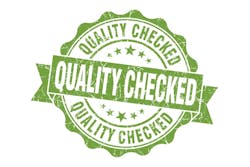When it comes to the collision repair business, what is the best facility size in which to repair cars? In other words, should we build small shops, or big ones? It’s a question that I find comes up quite often irrespective of whether I’m in Australia, Italy, Qatar or North America.
My experience points me to a number of things. First of all, you need to make an assessment of the size of the market that you operate within. If you are in a small town by the sea, then half of your customers are going to be fish! So it would probably be wise to build smaller. On the other hand, if you are in a large metropolitan area, then the scope for a bigger facility is always there.
Next, it’s about the work mix you are looking to attract. Can you tap into your own market, or are you looking for insurance carrier work? If it’s the latter, who has the contracts tied up, and what is available to you? If you are running a de-fleet facility (one that refurbishes newer vehicles before they are sold), can you get the 100 or so vehicles a day you need to make a profit at the low repair costs that tend to be the norm?
But the main consideration, of course, is whether you are able to make a profit from the work you are able to attract. In this case, you have to be savvy with your numbers, look at your risk, do your SWOT (strengths, weaknesses, opportunities and threats) analysis and don’t fool yourself that you are always going to be busy. Crunch the numbers with lower repair volumes.
In markets such as the UK, where we have seen (and are continuing to see) lower and lower repair volumes—the industry has shrunk from 18,000 body shops in 1990 to about 3,000 today—the belief is that smaller is better. That is because a smaller shop is easier to control, more flexible and can survive times of low volumes because overheads are lower. Most of the UK shops that we are either building or getting involved with are looking at 7,000–10,000 square feet to repair up to 50 vehicles per week, with new processes in place.
And, as insurers require things like providing courtesy cars and collecting and delivering customers’ vehicles on a truck increase, a smaller body shop can pull from a smaller geographical footprint, thus keeping costs lower.
On the other hand, when we look at the work we are doing in the Middle East, bigger is better, or that’s what they seem to believe. As an example, and I’m not breaking any confidence here, one of our new clients who has three prestige brands under his control is looking to build a collision shop to repair 400 vehicles per week, using 36 robots in a building that spans 5.4 acres!
So is big beautiful? It can be, but like all shops, in today’s tough business environment, wherever you go around the world it has to be structured around profitability. Therein lies the challenge. My experience, and the work we do, ensures that shops are utilizing best practices and have a process that is robust and the best in the collision industry—a process that delivers profit, lowers cycle time, reduces costs, and accomplishes all of that with a “right-the-fist-time” ethic.
As body shops get bigger, they require more controls. More controls mean more information technology, more chaos and more fixed costs within the business. Typical thinking, and I see this a lot, is that when things get bigger, the management controls (sticks and carrots) have to work in a more top-down manner. And this is where so many fail, because they believe that by driving in a process, people will do a better job. To the contrary, process does not drive people; people drive process. And their lies the challenge.
In order to run a successful collision center or MSO-type of operation, the business has to be turned upside down. This means that the process (whatever it is) has to be driven by the guys (and girls) on the shop floor. I always ask managers “how long would your business run without the boss there?” The answer of course is a reasonable amount of time. If you ask how long the business would run without the productive workforce there—well, you know the answer.
Running a bottom-up business is a challenge, and requires a complete culture change. It’s very difficult for management to let go, because responsibility and trust have to be given to those where it is often taken away (by simplifying tasks, breaking things into departments, etc).
Watching a collision business change its culture is one of the most amazing things you will ever witness. Once this culture change is achieved, then the business never looks back, because the inherent culture is built into the team, and the primary goals of increased throughput and greater profitability flourish.
Jon Parker is managing director of the Byteback Group, a U.K.-based information technology and services company aimed at advancing the collision repair industry. Parker can be reached at [email protected].
